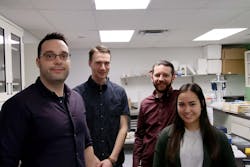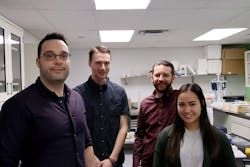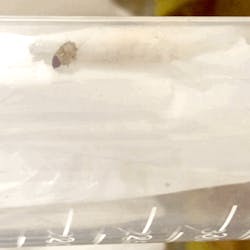Plastivore? Caterpillars That Eat Plastic and Offer Hope
For those of you who were not in my eighth-grade science class, one of the things we learned about was the difference between omnivores, carnivores, and herbivores.
"Omnivores" are animals that can eat and survive on both plants and other animals. They have the ability to digest and metabolize carbohydrates, protein, fat, and fiber. These animals – that include humans – have the highest likelihood of surviving in different environments.
"Carnivores", from the Latin word carnis – which means meat or flesh, and vorare meaning "to devour" – are those species that eat other animals. Carnivores get all of their nutrition and energy from eating animal tissue or meat, either by hunting or scavenging.
"Herbivores" are those animals that eat only plants. They are anatomically and physiologically adapted to eating plant material, which is more difficult to digest than meat, and many of them have intestinal flora composed of cellulose-digesting protozoans or bacteria.
Now comes the "Plastivore", in this case a caterpillar that eats polyethylene, the most common plastic in use today, primarily for single-use packing.
Some experts estimate the global consumption of plastic to be 300 million tons, most of which ends up in landfills. Biologists Dr. Christophe LeMoine and Dr. Bryan Cassone of Brandon University in Manitoba, Canada, recently published a study that found waxworms, the caterpillar larvae of the greater wax moth, can survive on a diet of polyethylene. According to their study, the waxworm has a species of intestinal bacteria that can survive on plastic, as its only source of nutrients, for over a year.
And no, these Plastivore caterpillars are not a mutant creation from the wild mind of Tim Burton, although they actually do sound like something from Beetlejuice – one of my favorite movies! These creatures get their common name from the fact that they are parasites in bee colonies that chew through beeswax.
You fellow anglers out there probably know them as “waxies”, and excellent panfish bait. The gut bacteria in the waxworm breaks down the hydrocarbon chains of which the honeycomb beeswax – and polyethylene – are composed.
Unfortunately, it took 60 waxworms to consume a matchbook-size piece of plastic bag in under a week. So it would take a whole lot of caterpillars to be a viable alternative to landfills.
According to Dr. LeMoine, “Waxworms are not an immediate solution to plastic pollution,” concedes Dr. LeMoine. "[But] a better understanding of how this synergy works may guide future efforts to design the ‘perfect’ plastic biodegradation system,” he adds.
In the meantime, reducing our dependence on plastics is a more immediate solution. Our restaurants don’t use plastic straws any longer and, contrary to the naysayers, the world didn’t end!
So, who knows what we might try next?
##########
A regular contributor to HPAC Engineering and a member of its editorial advisory board, the author is a principal at Sustainable Performance Solutions LLC, a south Florida-based engineering firm focusing on energy and sustainability. Email him at [email protected].
About the Author
Larry Clark
A member of HPAC Engineering’s Editorial Advisory Board, Lawrence (Larry) Clark, QCxP, GGP, LEED AP+, is principal of Sustainable Performance Solutions LLC, a South Florida-based engineering firm focused on energy and sustainability consulting. He has more than two dozen published articles on HVAC- and energy-related topics to his credit and frequently lectures on green-building best practices, central-energy-plant optimization, and demand-controlled ventilation.


